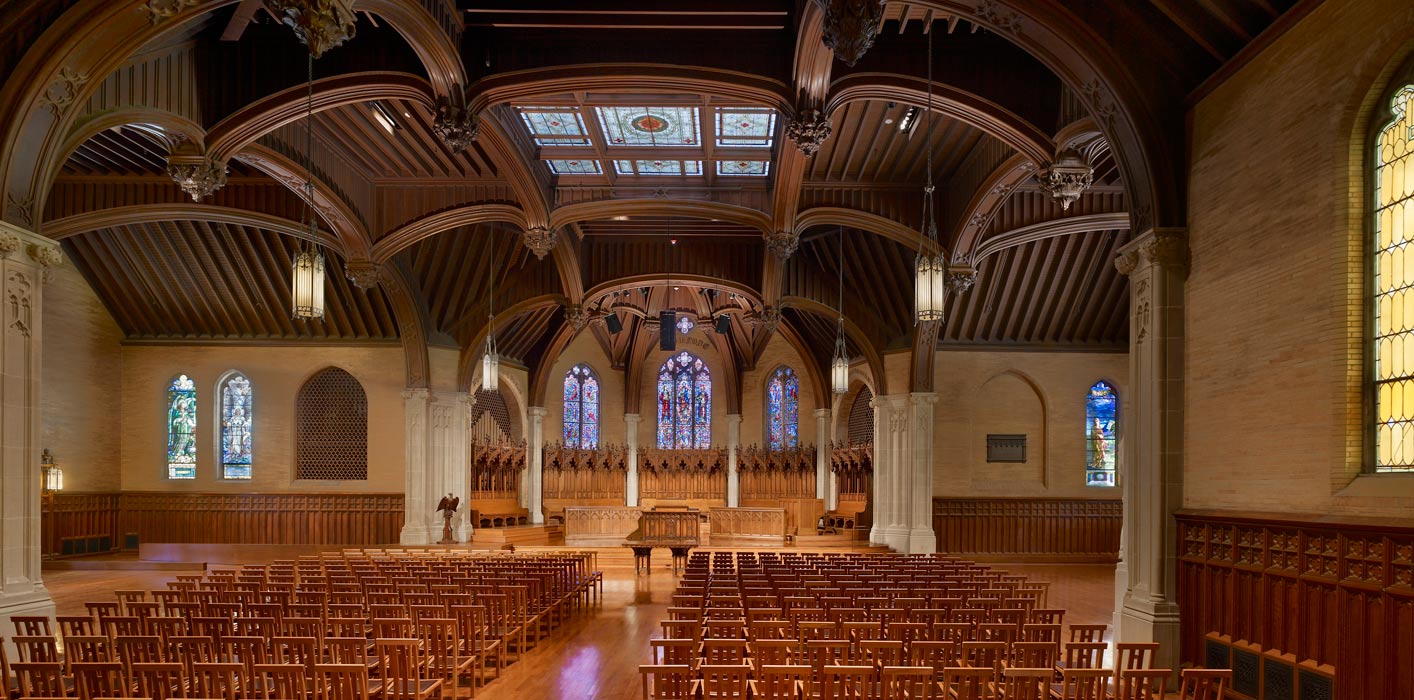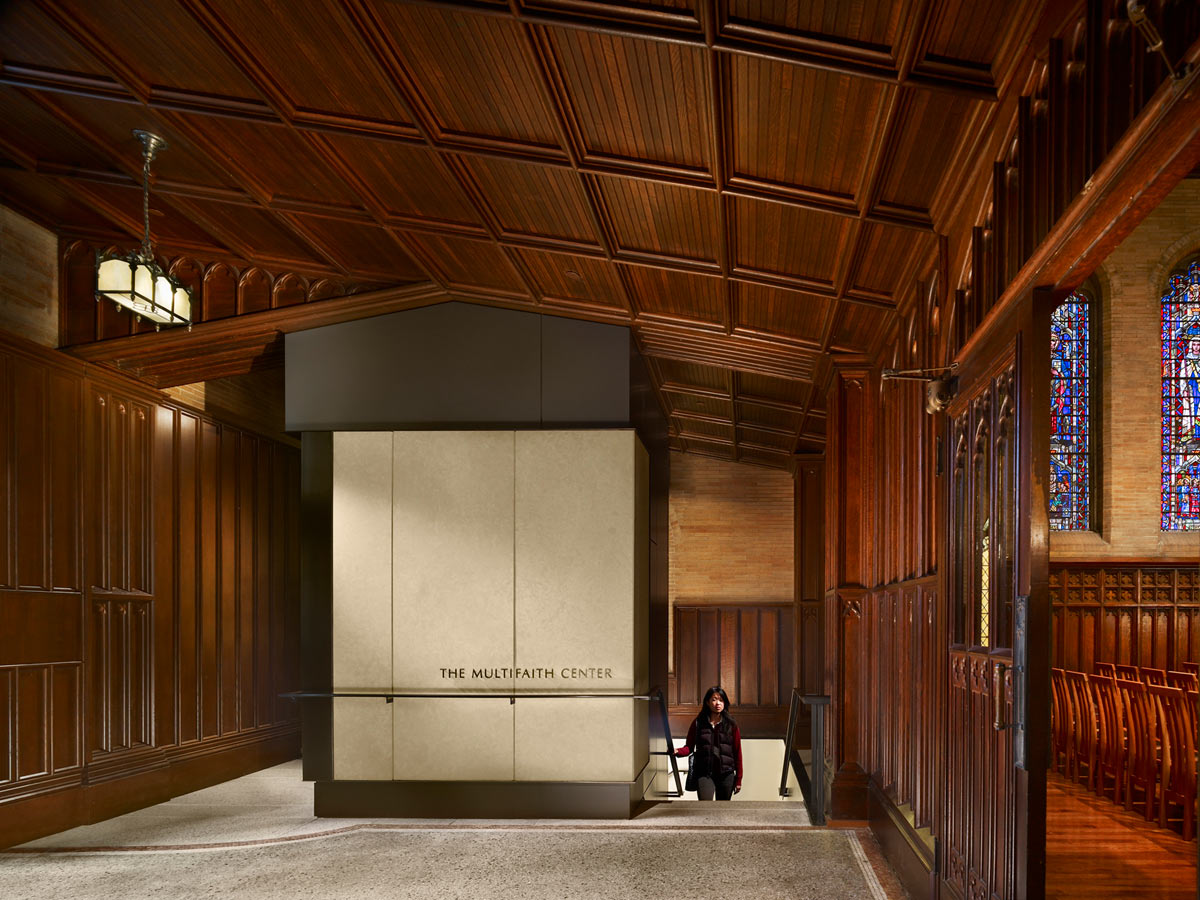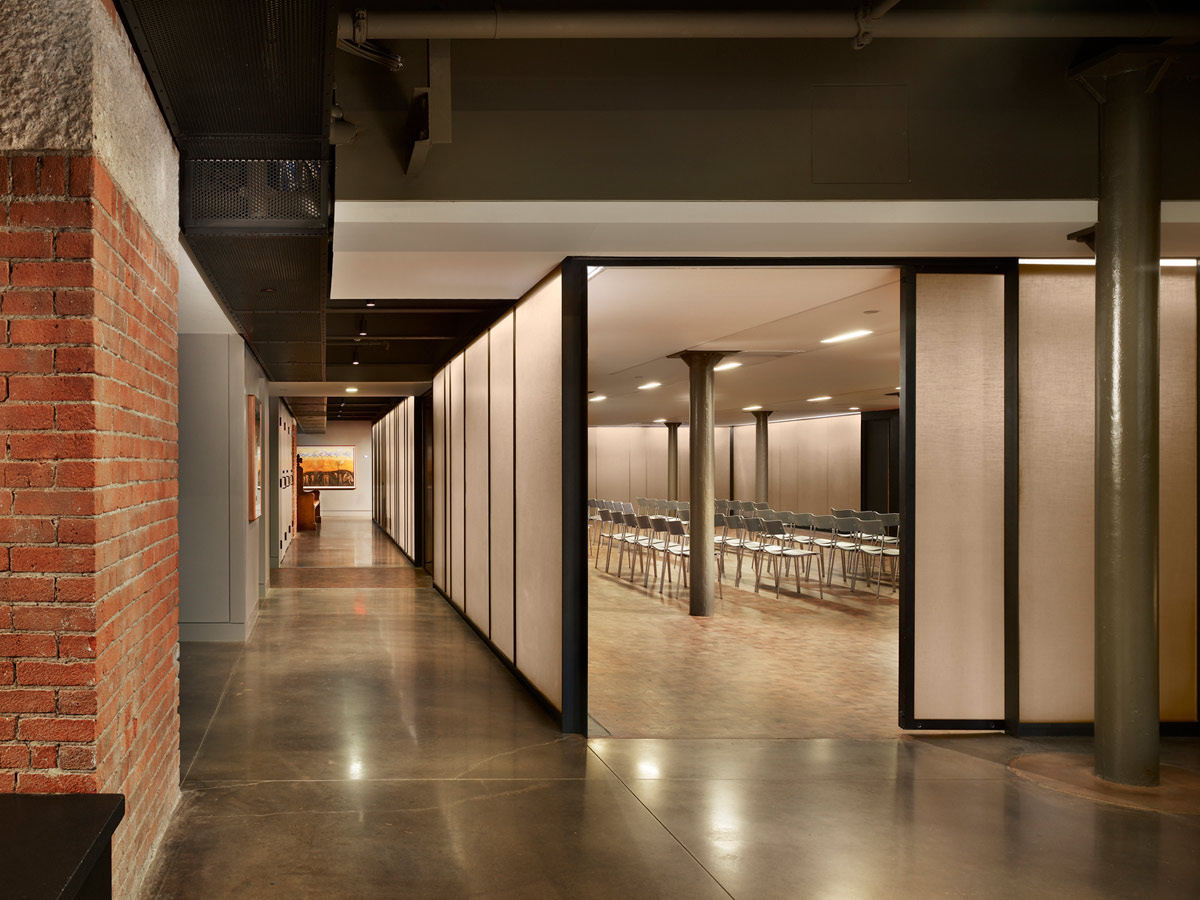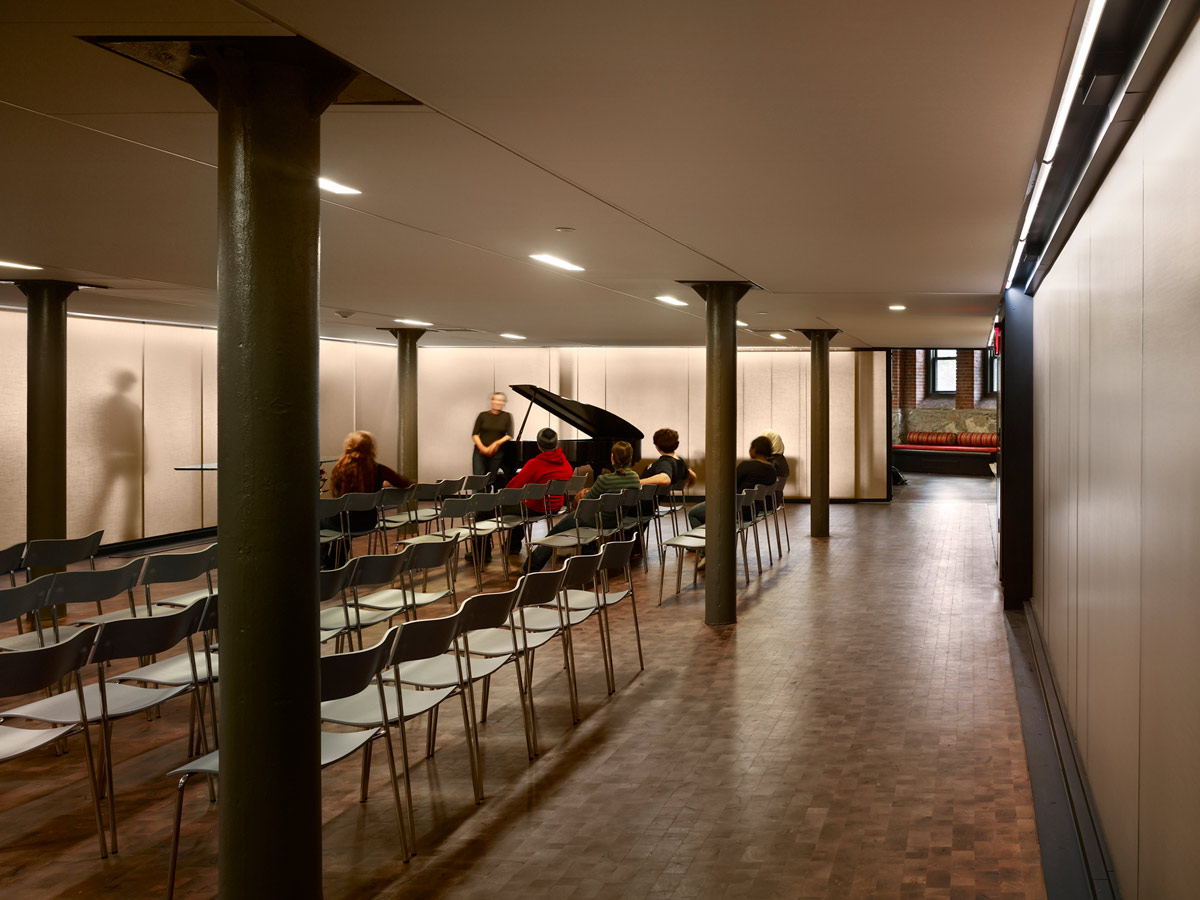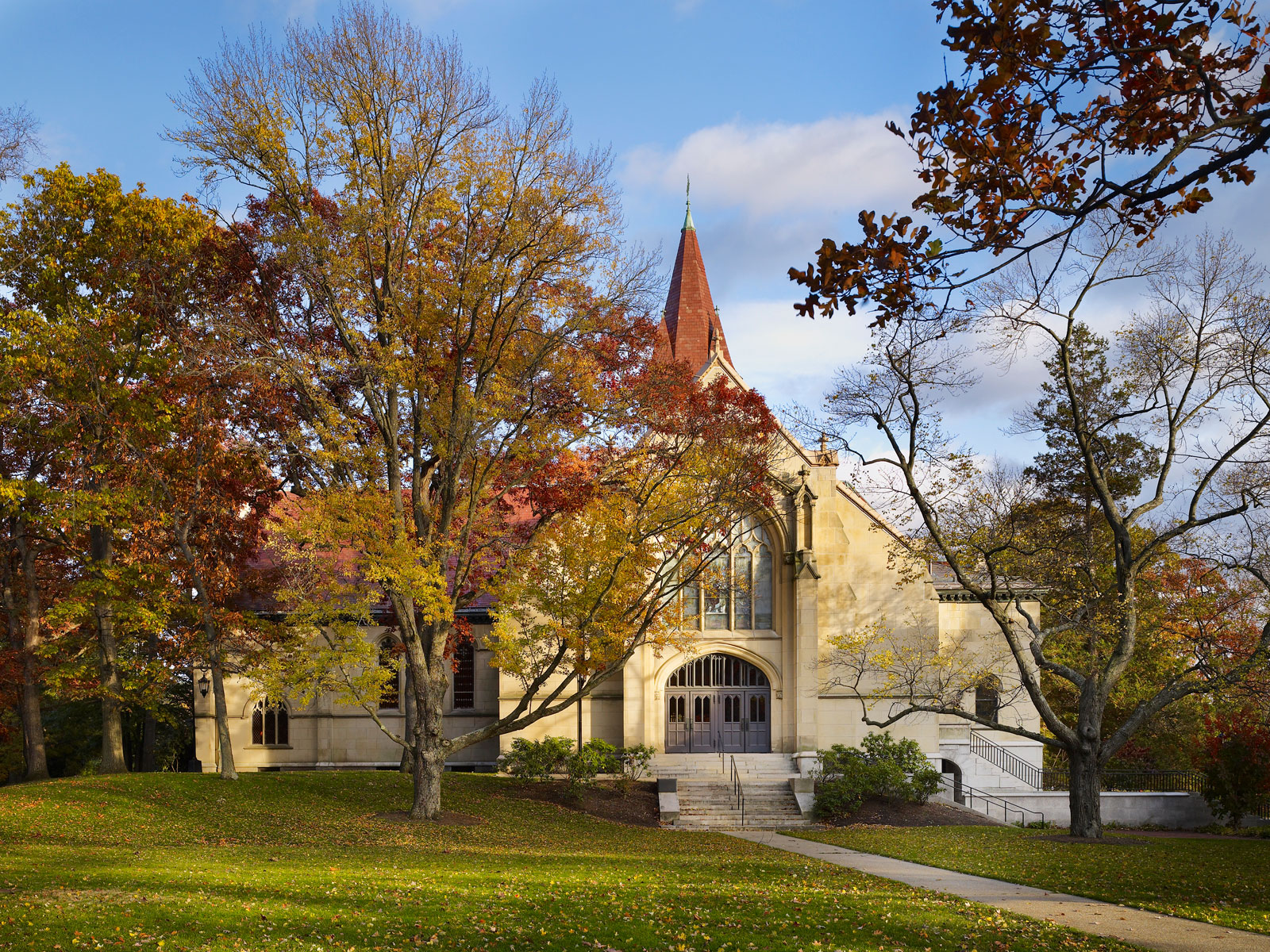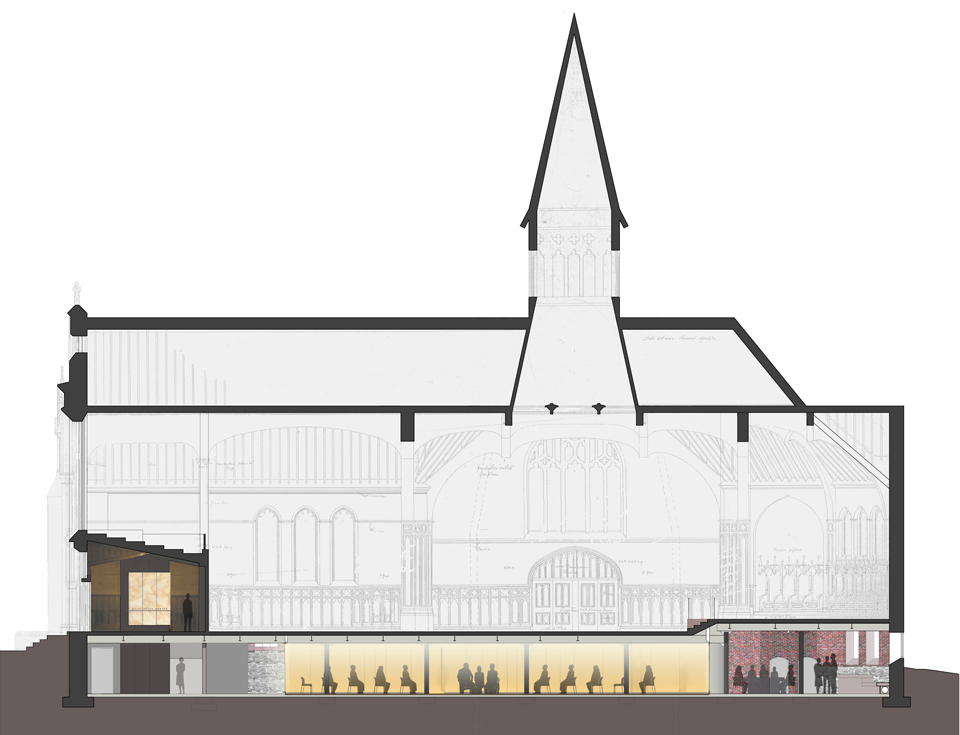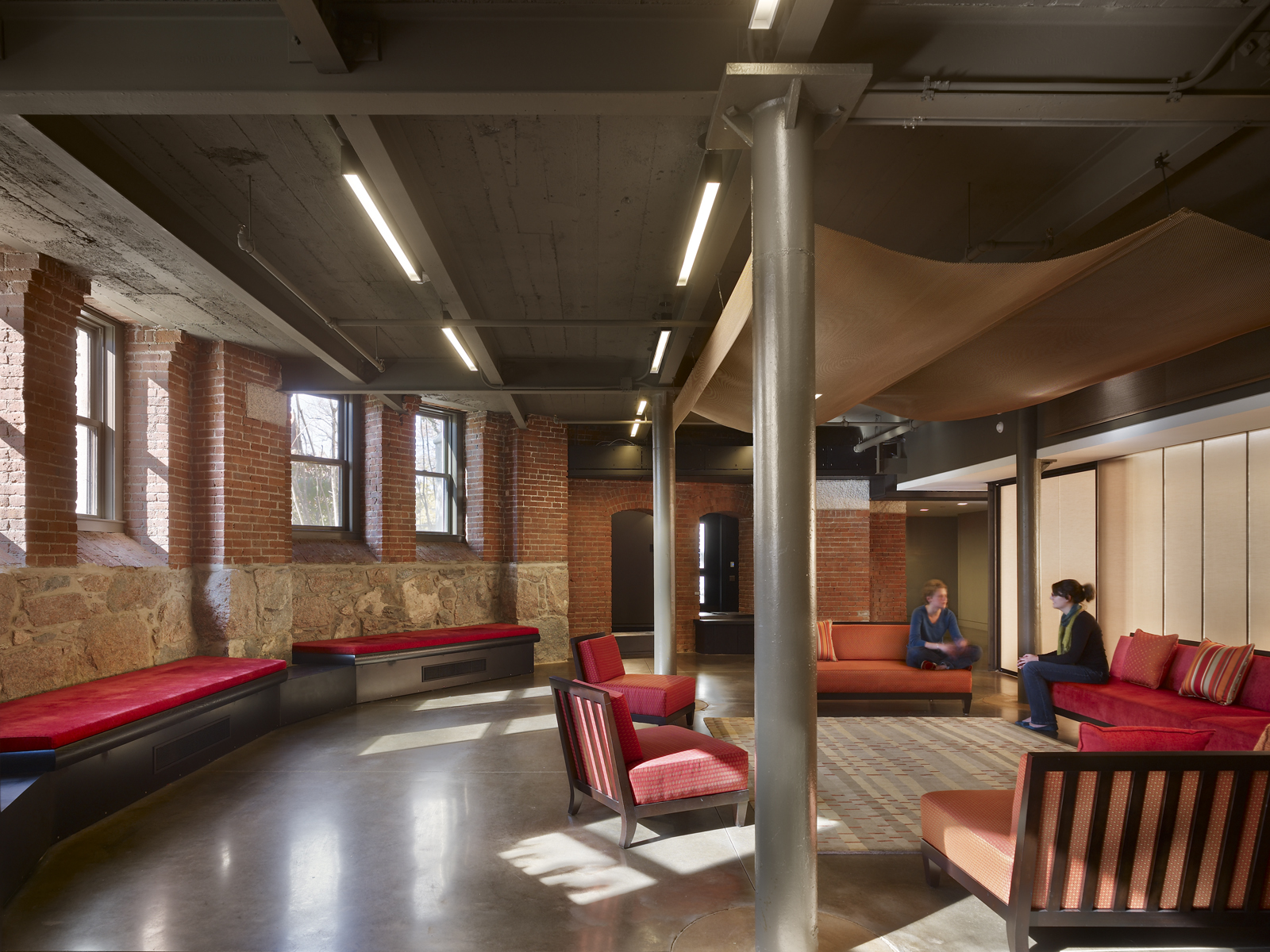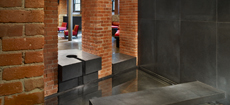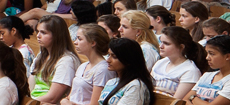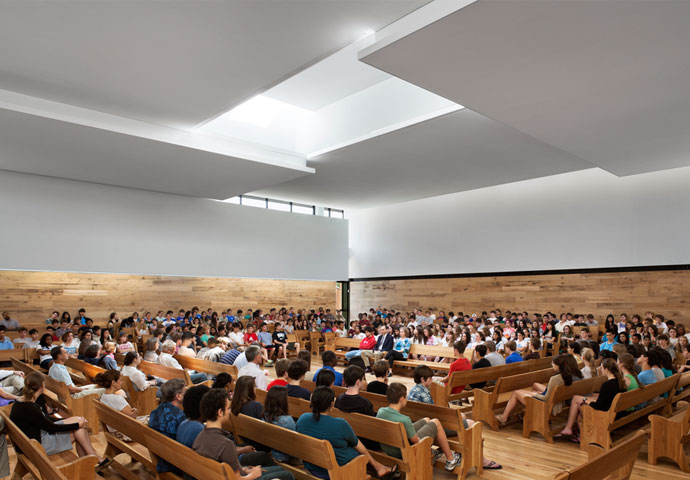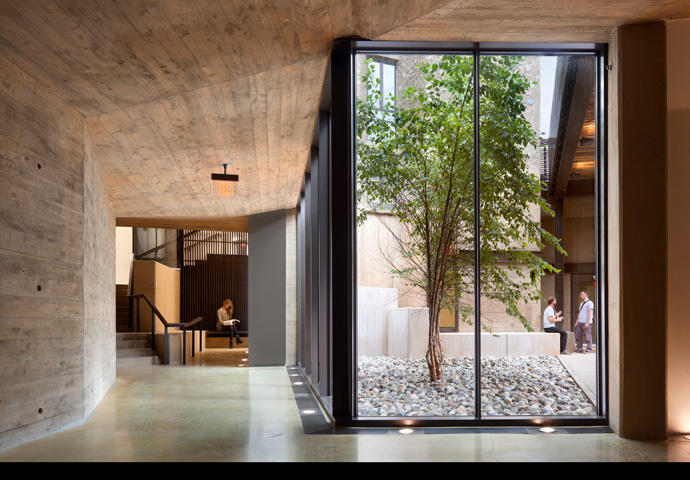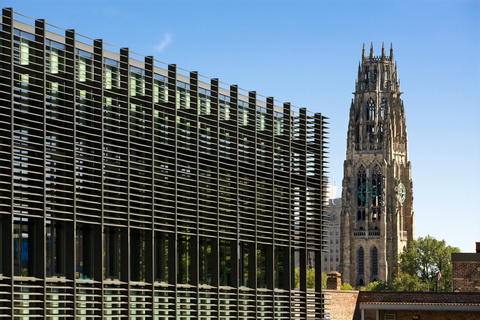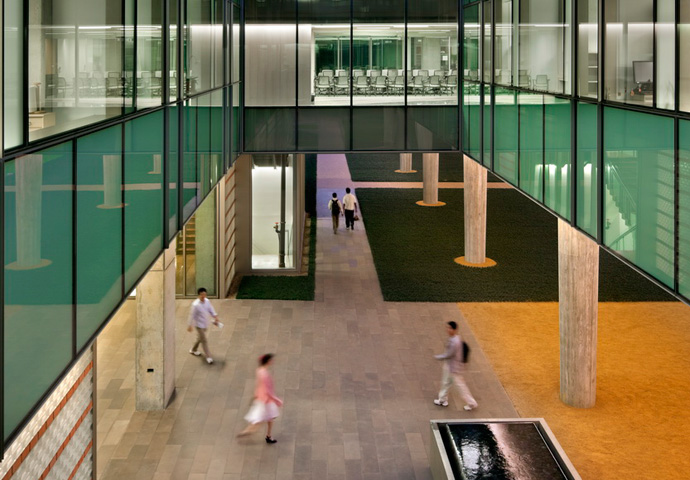How can we create an architectural dialogue between old and new that fosters interreligious understanding and community?
If Houghton Memorial Chapel, completed at the end of the nineteenth century, gave architectural form and symbolic substance to an originating Protestant majority, a new Multifaith Center in the crypt beneath the historic chapel gives symbolic presence and new form to the multiplicity of twenty-first century faith.
© Halkin Photography LLC
In 1992, Wellesley College, a secular liberal arts school, set out on an uncharted path to create a new model for engaging religious diversity as part of its educational program. With a focus on interreligious dialogue, one of its goals was to prepare students for an increasingly diverse American society. The 125 year-old Houghton Chapel became home to multifaith programs. However, it was not adequate to the new level of activity—particularly in the dark, dank basement where many functions were held—and did not reflect the spirit of the new programs.
Renovation
In 2006, Wellesley committed to a renovation in the fullest and most metaphorical sense of the word. We started by restoring the upper chapel to its original beauty. All building systems were replaced, acoustics were improved, and the building was enhanced with accessibility features including a discreet ramp to the altar. But the centerpiece of the project was the dramatic transformation of the basement level into the Multifaith Center for Religious and Spiritual Life. As you descend from the chapel to the lower level, a jewel box illuminated by backlit, linen-encased resin panels emerges within the heavy stone and brick masonry.
The glowing central worship hall is surrounded by three rooms and an open gathering space beneath the apse. Rather than linking these spaces with specific faiths, they are associated with activities of spiritual practice common to all faiths: meditation, study, prayer, and gathering for food and fellowship. Our planning strategy was informed by the notion of creating equity in the space for everyone, no matter how small the contingency of a particular faith might be.
Section showing the Multifaith Center in the Chapel basement.
Elements
At each turn, the Center generates a rich and enduring conversation between new modes of worship and old, and between new architecture and prior histories. We incorporated the idea of circumambulation, practiced in many faiths, by creating a design that would lead people around and through the various spaces. The wood floor of the worship hall at the center carries through to the smaller rooms, and the doors align in such a way that a visitor can never be in one space without feeling the presence of the others. The Center makes poetic use of the elements common to so many spiritual rituals and spaces: earth, stone, water, and especially light.
Elements common to many religious traditions—including earth, stone, water, and light—contribute to the tranquility and welcome of the Multifaith Center below ground.
© Halkin Photography LLC
Light became the element that unified all of the diversities this project was seeking to balance. It is a shock to discover such light within a basement—in religious architecture, the underground is traditionally associated with darkness and crypts. Instead, the luminous glowing box of light at the core of this building, counterposed against the magnificence of the chapel above, completely confounds your expectations—an experience evocative of interfaith dialogue itself.


